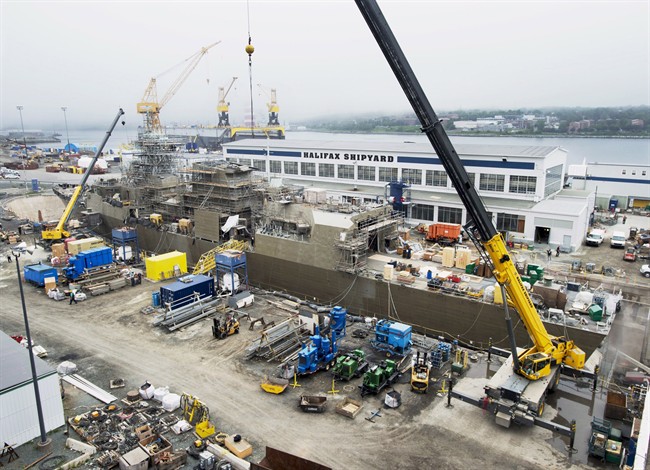OTTAWA – The Harper government has signed a contract to build its long-promised Arctic patrol ships, but it had to increase the overall project budget by $400 million to get there.

Officials from Public Works and National Defence, along with Irving Shipbuilding President Kevin McCoy, made the announcement Friday in Ottawa ahead of a planned event next week in Halifax.
The entire program is now expected to cost $3.5 billion, up from the $3.1 billion initially proposed when the ships were first announced in 2007 as part of the Conservative government’s ambitious plan to rebuild the military.
The agreement is to construct six light icebreakers for the navy’s use in the North and off both coasts, but there will be a ceiling to the budget and officials acknowledge the number of ships could slip to five if the program runs into trouble.
“Should costs increase due to unforeseen factors, the contract will guarantee the delivery of five ships within the same ceiling price,” said a senior government official, who spoke on background at technical briefing.
READ MORE: Design of Arctic patrol vessels on time, under budget by $20 to $30M
The deal provides incentives to Irving to keep costs down in order to deliver all six ships on time and on budget.
Essentially, officials have agreed to a benchmark cost and if it isn’t met, Irving’s fee goes down. If the company manages to beat the benchmark, then its fee goes up.
“It’s a fairly simple formula,” McCoy said. “As we drive our costs down, both Canada and Irving share in some of the benefit of the reduced cost.”
Last fall, a series of defence and government sources told The Canadian Press that with existing funding the program was on track to deliver five, not six ships – a report McCoy denied at the time. A few days later, the parliamentary budget office came out with a report that warned delays and inflation would force the Conservative government to buy fewer ships, if it stuck with the original budget.
A senior government official, speaking on background because he was not authorized to be quoted publicly, said the increase in the budget will mostly go to the project’s contingency fund, which is built into every program as a cushion against inflation and unforeseen circumstances.
McCoy didn’t want to criticize the PBO report directly, but said the company’s exhaustive planning, use of computer modeling and three-dimensional imaging allowed it to more accurately predict the costs and what it could do.
He was adamant Irving will deliver six ships by the end of the program in 2022.
But in order to do so, the company will have to keep a tight rein on not only its costs, but those of its suppliers, who are already feeling the pinch and have complained to Nova Scotia Economic Development Minister Michel Samson.
The Aerospace and Defence Industries Association wrote Samson last summer with concerns about “onerous conditions,” particularly where it comes to matters of intellectual property.
McCoy makes no apologies for driving a hard bargain with suppliers.
“As the prime contractor, it is our job to deliver the ships that Royal Canadian Navy needs for a fair budget,” said McCoy, who noted that Irving hired outside experts to challenge costing formulas. “We ‘ve taken on a considerable amount of risk as a company and we expect our suppliers to give us the best possible price.”



Comments